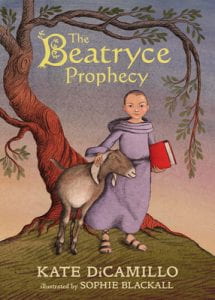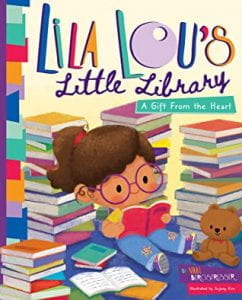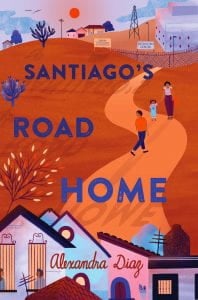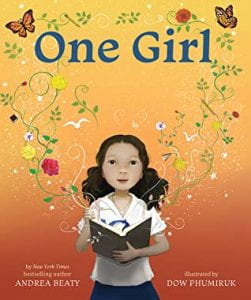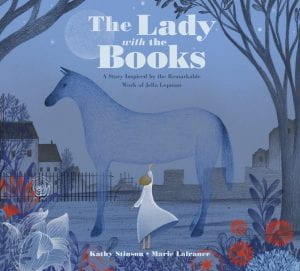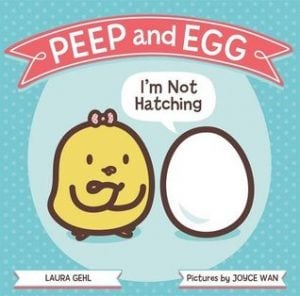
Gehl, Laura. Peep and Egg: I’m Not Hatching. New York: Farrar Straus Giroux, 2016. 978-0-374-30121-7. 32 pp. $16.99. Gr. Pre-K-2.
Peep wants Egg to hatch so that they can have fun together! But Egg is NOT hatching! It is too scary out there in the big world! Peep persists and continues to remind Egg of all of the fun things that they could do if she would just hatch; watch the sunrise; ride the sheep; splash in puddles. But Egg continues to say “I’m not hatching,” after each. This cute, highly graphic yet sweet picture book will have kids repeating Egg’s refusal with you and cheering when she ultimately doesn’t want to be left behind. THOUGHTS: This is a fun book that gently introduces the topic of fears and how to overcome them. It is perfect for a younger crowd who will get into the repetition of repeating, “I’m not hatching!” Students can even create a group story and choose another creature to try to convince to come out ( a turtle; a hibernating bear; a tadpole) and give excuses and then a solution for how to finally get them to decide to come out!
Picture Book Donna Fernandez, Calvary Christian Academy
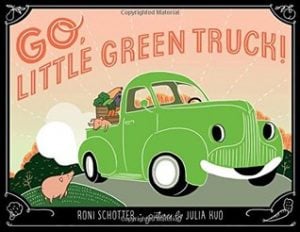
Schotter, Roni. Go, Little Green Truck! New York: Farrar Straus Giroux, 2016. 978-0-374-30070-8. 32pp. $16.99. Gr. K-2.
Little Green Truck is the Farmer’s faithful helper. Then one day, he is replaced by a Big Blue truck that is new and can haul bigger loads. Little Green truck is forgotten and sad. Then one day, the farmer’s daughter remembers how gently Little Green took them to town and what a nice small size he is for the narrow lanes at the Farmer’s Market. So begins Little Green Truck’s transformation. He is washed and painted. The little girl paints happy flowers and fruit on his sides. His engine is replaced with one that runs on corn and soy oil from their vegetables, and just like that Little Green gets a new life! Little Green is used to haul all of the vegetables, pies, and preserves to the farmers market because he has a gentler ride and a fun new look that all of the customers love. This sweet transformation and repurposing tale is beautifully illustrated by Julia Kuo. THOUGHTS: This tale can be used to illustrate how we can repurpose and reuse things that might have otherwise gone into a landfill. It also might be used to illustrate how we all have a unique purpose. I loved how Little Green got a hybrid soy oil engine! This might be a fun way to introduce alternative fuels to the younger set as well!
Picture Book Donna Fernandez, Calvary Christian Academy

Yuly, Toni. Cat Nap. New York: Macmillan, 2016. 978-1-250-05458-6. 32 pp. $16.99. Gr. Pre-K-1.
Cat just wants to sleep. But Kitten just wants to play. So Cat thinks up a clever way to get some quiet time, a game of Hide and Seek! Except Kitten is very good at finding Cat. Too good! Readers join Kitten in the search to find Cat. Finally exhausted, Cat decides to just go take a nap and finds a surprise waiting in his bed. THOUGHTS: This bold graphic tale of Cat and Kitten will delight young readers and perhaps make a good going to bed (or naptime) story.
Picture Book Donna Fernandez, Calvary Christian Academy
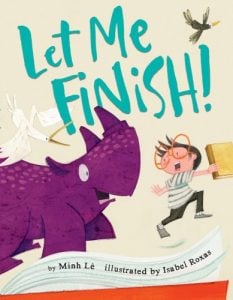
Le, Minh. Let Me Finish. New York: Hyperion, 2016. 978-1-4847-2173-5. 32pp. $16.99. Gr. K-2.
The young boy has just gotten settled with his new book. He is excited and anxious to get started. Then, out of the tree, pop some birds who spoil the plot and tell the ending of the book. Discouraged, the boy heads back to find another book that he wanted to read. He sneaks off and finds a quiet spot, but again the animals spoil the book. Why can’t they just let him finish?!? This hilarious romp to avoid the spoilers and finish the book he wants to read is a problem that many readers can relate to. The action packed illustrations are colorful and full of emotion. Will he avoid hearing the ending? Or should he really have listened? THOUGHTS: This is a great discussion starter for why students should not be “spoilers” – those who tell the ending of a book or movie and ruin it for others. It also might be a fun way to talk about where students go to read and not be interrupted.
Picture Book Donna Fernandez, Calvary Christian Academy
 Blackall, Sophie. Negative Cat. Nancy Paulsen Books, 2021. 978-0-399-25719-3. 32 p. $17.99. Grades K-3.
Blackall, Sophie. Negative Cat. Nancy Paulsen Books, 2021. 978-0-399-25719-3. 32 p. $17.99. Grades K-3. 
